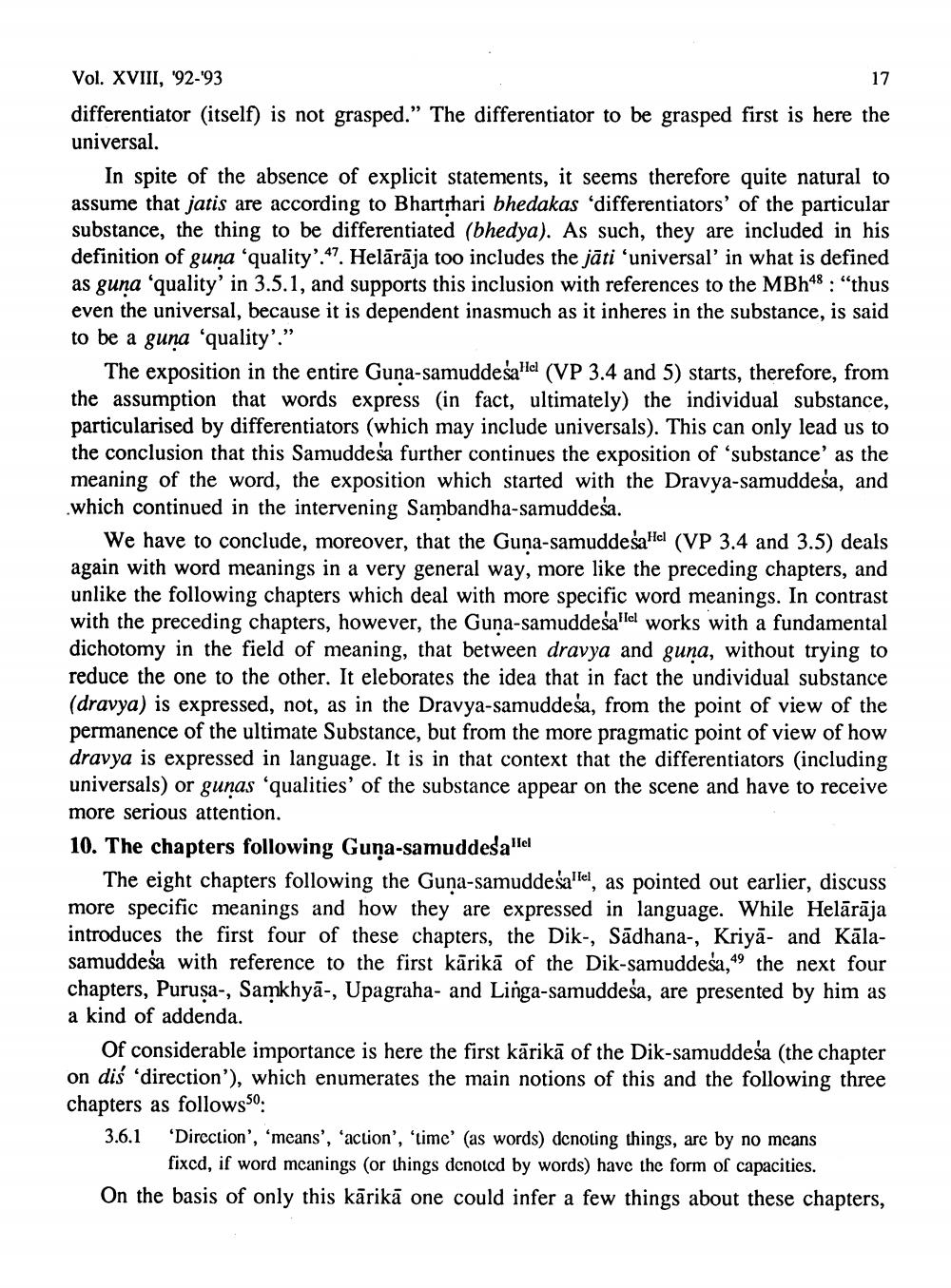________________
Vol. XVIII, '92-'93
17 differentiator (itself) is not grasped." The differentiator to be grasped first is here the universal.
In spite of the absence of explicit statements, it seems therefore quite natural to assume that jatis are according to Bhartrhari bhedakas 'differentiators' of the particular substance, the thing to be differentiated (bhedya). As such, they are included in his definition of guna quality'.47. Helārāja too includes the jāti 'universal' in what is defined as guna 'quality' in 3.5.1, and supports this inclusion with references to the MBh48 : "thus even the universal, because it is dependent inasmuch as it inheres in the substance, is said to be a guna 'quality.”
The exposition in the entire Guna-samuddesalle (VP 3.4 and 5) starts, therefore, from the assumption that words express (in fact, ultimately) the individual substance, particularised by differentiators (which may include universals). This can only lead us to the conclusion that this Samuddeša further continues the exposition of 'substance' as the meaning of the word, the exposition which started with the Dravya-samuddesa, and which continued in the intervening Sambandha-samuddeša.
We have to conclude, moreover, that the Guna-samuddesafic (VP 3.4 and 3.5) deals again with word meanings in a very general way, more like the preceding chapters, and unlike the following chapters which deal with more specific word meanings. In contrast with the preceding chapters, however, the Guna-samuddesallel works with a fundamental dichotomy in the field of meaning, that between dravya and guna, without trying to reduce the one to the other. It eleborates the idea that in fact the undividual substance (dravya) is expressed, not, as in the Dravya-samuddesa, from the point of view of the permanence of the ultimate Substance, but from the more pragmatic point of view of how dravya is expressed in language. It is in that context that the differentiators (including universals) or gunas 'qualities' of the substance appear on the scene and have to receive more serious attention. 10. The chapters following Guņa-samuddesallel
The eight chapters following the Guna-samuddesallel, as pointed out earlier, discuss more specific meanings and how they are expressed in language. While Helārāja introduces the first four of these chapters, the Dik-, Sadhana-, Kriyā- and Kālasamuddesa with reference to the first kārikā of the Dik-samuddesa,49 the next four chapters, Purusa-, Samkhyā-, Upagraha- and Linga-samuddesa, are presented by him as a kind of addenda.
Of considerable importance is here the first kārikā of the Dik-samuddesa (the chapter on dis direction'), which enumerates the main notions of this and the following three chapters as follows: 3.6.1 "Direction', 'means', 'action', 'lime' (as words) denoting things, are by no means
fixed, if word meanings (or things denoted by words) have the form of capacities. On the basis of only this kārikā one could infer a few things about these chapters,




